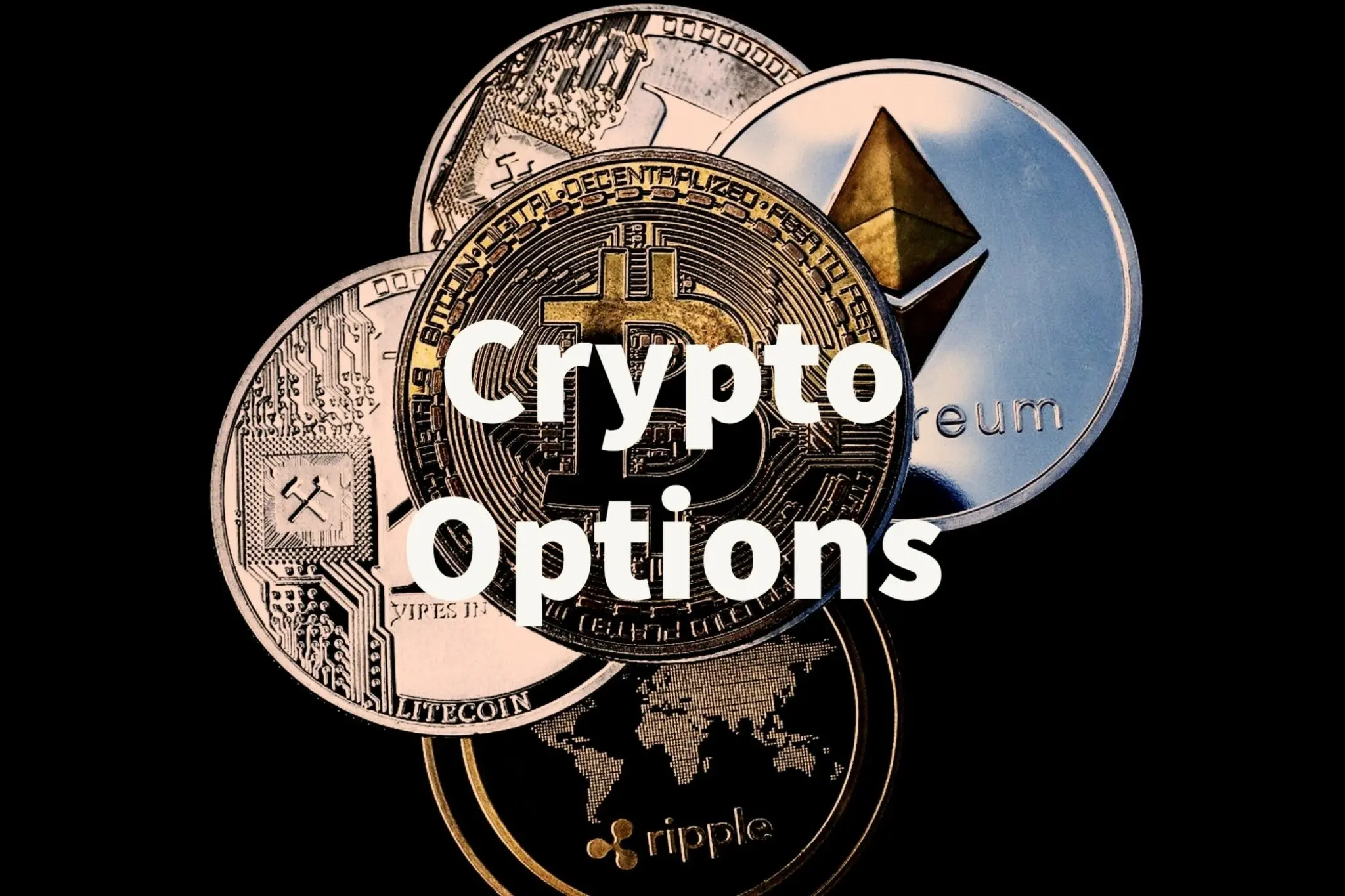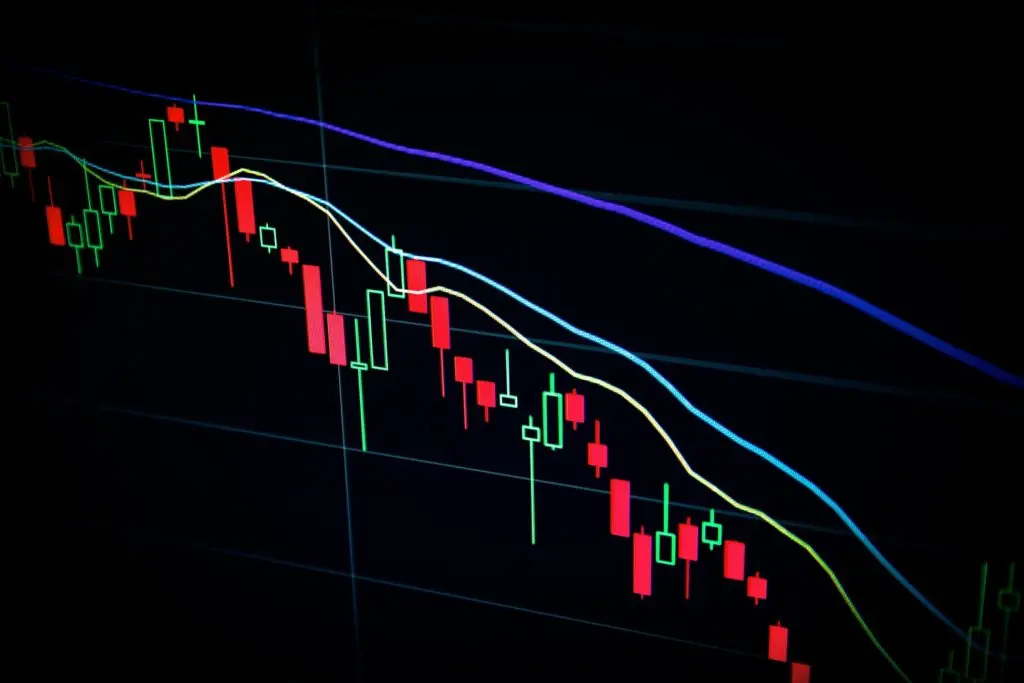When navigating the world of cryptocurrency, you might wonder whether staking or options can provide better returns.
Crypto staking allows you to earn rewards by holding and supporting a blockchain network. It’s known for its relatively stable returns and lower risk.
In contrast, crypto options offer the potential for higher returns but come with increased risk due to market volatility.
In crypto staking, you lock your tokens for a set period, supporting network operations and earning rewards. This process is often seen as a safer way to generate passive income in the crypto space.
Meanwhile, crypto options involve contracts that give you the right to buy or sell at a set price in the future, which can lead to significant profits if the market moves in your favor.
Choosing between staking and options depends on your risk tolerance and investment goals.
If you prefer stability and predictable returns, staking might be your go-to choice. However, if you have a higher risk appetite and aim for potentially greater gains, exploring crypto options could be more appealing.
Understanding these methods will help you decide which aligns best with your financial strategies.
Understanding Crypto Staking

Crypto staking is a way for you to earn rewards by participating in the validation of cryptocurrency transactions. It offers you a chance to gain passive income while supporting network security.
Mechanism of Staking in Cryptocurrency
In crypto staking, you lock up your coins in a cryptocurrency wallet to support the operations of a blockchain network. This involves Proof of Stake (PoS) and its variants like Delegated Proof of Stake (DPoS).
These systems use your staked coins to validate new blocks and transactions.
Your staked coins act as collateral to secure the network. The amount and duration of your stake often determine your chance to validate blocks, thus impacting your rewards.
Participating in staking is simpler than mining, requiring less energy and resources.
Rewards and Risks Associated with Crypto Staking
Staking rewards are distributed in the form of new coins. These rewards can vary widely, often ranging from 2% to over 18% annually, based on different cryptocurrencies and network performance.
This can provide a steady income stream, akin to earning interest.
Staking involves risks, such as price volatility of the staked coins. There is also a possibility of network-related risks, like slashing, where a portion of your staked coins is forfeited due to network issues or incorrect validation activities.
Being aware of these risks can help you make informed decisions.
Staking Pools and Their Role
Staking pools allow you to combine your resources with other users to increase your chances of successfully validating blocks and earning rewards.
These pools are usually managed by pool operators who handle the setup and technical requirements.
By joining a staking pool, you can start with a smaller amount of coins compared to solo staking. Each pool has different rules for reward distribution and fees.
It’s important to choose a reputable pool to maximize your earnings and ensure security.
Staking pools make the process accessible, letting you participate actively even with limited resources.
Exploring Crypto Options

Crypto options offer a unique way to trade digital currencies, allowing you to speculate on future price movements or hedge your portfolio. This section covers how crypto options work, their potential returns, and how market volatility impacts trading strategies.
Basics of Crypto Options Trading
Crypto options give you the right, but not the obligation, to buy or sell a cryptocurrency at a set price before a specific date.
Call options offer the right to buy, while put options allow you to sell.
You pay a premium upfront to enter an option contract. This is the maximum loss you can incur. If the option favors you, it can lead to notable profits.
Unlike traditional options, crypto options often have more flexible terms.
Exchanges such as Deribit and Binance provide platforms for trading. Make sure to check out the tools they offer for analyzing the market and managing your trades.
Knowing these basics can help you get started in crypto options trading more effectively.
Potential Returns from Crypto Options
Returns from crypto options can vary widely based on factors like market conditions and your chosen strategy.
Options allow for leveraging your investment, potentially leading to higher profits compared to buying the crypto outright.
If prices move in the direction you anticipated, options can provide significant returns on a comparatively small initial investment.
However, certain strategies can also result in losses if the market goes against your prediction.
Successful trading of options requires understanding market trends and managing risks.
Using risk management tools effectively can make a difference in how much you might earn or lose. So, keep an eye on the crypto market to time your trades wisely.
Volatility and Option Strategies
Crypto markets are known for their high volatility, which plays a big role in crypto options trading.
High volatility can increase the chances of profiting from options, as prices move more significantly. This makes options appealing to traders seeking to capitalize on these price swings.
Strategies such as straddles and strangles are often used to benefit from volatile markets.
These involve buying both call and put options to profit from price movements, irrespective of the direction.
It’s crucial to align your strategy with your risk tolerance.
While these strategies can amplify your gains, they can also multiply your losses if not executed properly.
Understanding both the market and these strategies is key to using volatility to your advantage.
Comparative Analysis

When deciding between crypto staking and crypto options, it’s crucial to consider factors such as returns, risks, time commitment, and market influences.
Each factor plays a significant role in determining which strategy might best suit your investment goals.
Return Profiles: Staking vs. Options
Crypto staking typically provides more predictable, steady returns. These returns can range from 2% to over 18%, depending on the cryptocurrency and network conditions.
Staking rewards come from block validation and transaction fees, offering a consistent passive income stream.
On the other hand, crypto options carry the potential for higher returns. Traders can earn substantial profits if the market moves in their favor.
However, these returns can be much less predictable and are influenced by market volatility and timing, making options riskier than staking.
Risk Assessment
Staking is considered a safer avenue because it involves holding and locking up assets, reducing exposure to price volatility.
However, network risks can still affect your staked assets. For instance, a high staking ratio can dilute your rewards.
Conversely, crypto options entail higher risk. They offer the chance to profit significantly, yet also the possibility of losing your initial investment.
This risk stems from market fluctuations and the short lifespan of options contracts, requiring a strategic approach.
Time Horizon Considerations
Staking usually involves a longer time commitment, as assets are locked for a particular duration, which varies by protocol.
This approach is suitable for investors aiming for stable returns over time, like a fixed-income strategy.
Crypto options typically involve a shorter time frame, with contracts often lasting weeks or months.
This method suits traders looking for quick returns and who can monitor market developments closely. You need to act swiftly when dealing with shifting market trends.
Market Conditions’ Impact
Staking rewards are relatively stable and don’t rely heavily on short-term market swings. Instead, they depend on network performance and participation levels.
So, even if the crypto market is volatile, staking can remain a consistent income source.
In contrast, crypto options are highly sensitive to market conditions.
Market volatility can greatly amplify potential returns, but it also increases the risks.
Success in options trading hinges on timing market movements accurately, requiring keen market analysis.
Evaluating Liquidity Factors
When looking at crypto staking, liquidity is a crucial factor.
Often, when you stake your cryptocurrency, it’s locked up for a certain period. This means you can’t easily sell or trade it during that time. The lock-up period can vary depending on the coin and the platform you use.
In contrast, crypto options usually offer more liquidity. You have the freedom to buy or sell your options before they expire. This means you can react to market changes more quickly and manage your investments flexibly.
Here is a simple comparison between staking and options regarding liquidity:
| Feature | Crypto Staking | Crypto Options |
|---|---|---|
| Lock-Up Period | Yes, typically | No |
| Immediate Trading | Limited | Available |
| Market Flexibility | Restricted | Higher |
Consider the trade-off between potential returns and liquidity. If you prioritize having quick access to your funds, crypto options might align better with your goals.
Choose based on your comfort with managing risks and rewards. Each choice has its own balance between potential earnings and access to funds.
Diversification and Portfolio Management
When managing a crypto portfolio, diversification is key. Adding a mix of cryptocurrencies and crypto-related assets like staking or options can help.
Distributing your investments across different assets may reduce risk and increase potential returns.
- Cryptocurrencies: Consider holding a range of tokens. This can include well-known ones like Bitcoin and Ethereum alongside lesser-known tokens.
- Crypto Staking and Options: Mixing these can offer a balance between stable returns and potential high gains. Staking can provide regular rewards, while options can bring higher but riskier earnings.
Creating a diversified portfolio involves understanding your risk tolerance.
Balancing riskier investments with more stable ones can help you navigate market changes more smoothly.
Keep track of market trends.
Adjust your holdings based on new developments or shifts in the crypto landscape. This will aid in maintaining a healthy portfolio.
Also, use tools available on various platforms to monitor your investments.
These tools can help you see how each part of your portfolio is performing. Frequent reviews of your asset allocation will aid in managing risk effectively.
Tax Implications and Regulatory Environment

When dealing with crypto staking, it’s important to know that staking rewards are viewed as taxable income.
The rewards received through staking are taxed when you get them, and there may be more taxes when you decide to sell those rewards.
In crypto options, things work a bit differently. Gains or losses from trading options are subject to capital gains tax.
So, how much tax you pay depends on how long you hold the options before selling them, impacting short-term and long-term gains.
Key Points to Consider:
- Staking rewards: Taxed as income.
- Options gains/losses: Subject to capital gains tax.
The regulatory environment for crypto is always changing.
Government agencies are keeping a closer watch on digital assets to ensure taxes are collected properly.
You should stay informed on new regulations, as they can have major effects on your investments. Keeping up with tax guidance can help you avoid any issues.
The constantly evolving landscape means you should consider consulting a tax professional for advice.
This will help you stay compliant and optimize your investments.
Technological Considerations
When comparing crypto staking and crypto options, understanding how technology impacts these investment strategies is vital.
Smart contracts and security play a key role in ensuring safe transactions, while the influence of blockchain networks affects accessibility and performance.
Smart Contracts and Security
Smart contracts are self-executing contracts with terms written into code. They play a critical role in both staking and options trading.
For staking, smart contracts automatically manage the locking and distribution of rewards, reducing the chance of human error.
Security is essential, as vulnerabilities in smart contracts can lead to loss of funds.
It’s important to choose platforms that are audited by reputable firms.
In crypto options, smart contracts enable the execution of trades without intermediaries. This setup increases transparency and reduces costs.
However, you must consider the risk of bugs or exploits that could be costly.
Blockchain Network Influence
The choice of blockchain network for staking or options can impact functionality and returns. Staking typically requires a network using the Proof of Stake (PoS) system.
The network’s transaction speed, fees, and energy efficiency are key factors.
For options, blockchain influences the speed of trade execution and availability of trading pairs. Ethereum is popular for options due to its robust smart contract capabilities.
However, high gas fees may impact profitability. You might find other blockchains with lower costs and faster speeds more suitable, depending on your needs.
Always research how the network’s attributes align with your investment goals.
Long-Term Growth and Sustainability
When considering long-term growth and sustainability, crypto staking offers a solid option. By staking your crypto, you contribute to network security and receive rewards in return.
This option tends to attract risk-averse investors because of its relative stability.
In contrast, crypto options allow you to speculate on the future price of a cryptocurrency. This can offer higher returns in a shorter period.
However, options are often seen as more volatile and require a good understanding of market trends to capitalize effectively.
- Staking:
- Provides more predictable and steady returns.
- Usually involves lower risk.
- Contributes to the functioning of network protocols.
- Crypto Options:
- Offer potential for higher but less predictable returns.
- Associated with higher risk.
- Require active market engagement.
Community and Governance in Crypto Investments
When you participate in crypto investments, community and governance play crucial roles. These aspects can heavily influence the value and security of your investments.
Community engagement often leads to innovation and support, which are important for the success of any crypto project.
Community members usually get involved through discussion forums, social media platforms, or project meetings. This engagement allows them to share ideas, propose changes, and contribute to the project’s growth.
Strong communities foster trust and help drive the project’s adoption and acceptance.
Governance refers to the rules and decision-making processes that guide a project’s development.
Some projects offer governance tokens, giving holders a voice in protocol updates, budget allocations, and other key decisions.
These tokens empower you to impact the project’s direction, providing a sense of ownership.
In some projects, governance involves voting systems where your influence is proportional to your token holdings.
This means the more tokens you hold, the more say you have. Participating in governance can affect the project’s future and its potential returns.
When choosing investments, consider projects with clear governance structures and active communities. These factors can make your crypto investments more stable and promising.
Concluding Thoughts
When comparing crypto staking and crypto options, you need to think about your risk tolerance and goals. Staking often gives you a predictable source of passive income.
It means locking up your crypto for a time. Your rewards might vary depending on network participation.
Crypto options can offer higher returns, but they come with more risk and complexity. These financial instruments let you speculate on price movements without needing to own the underlying asset.
They can quickly earn you money, but losses can be significant if the market moves against you.
Before making a choice, consider your investment strategy. Do you prefer steady gains and lower risk? Staking might suit you better.
Are you willing to face potential losses for the chance of higher rewards? Then crypto options might be the way to go.
Balancing both strategies could offer a diversified approach. Staking provides stability to your portfolio while options give you the chance for greater gains.
Make sure your decisions align with your financial goals.
Frequently Asked Questions
Crypto staking and options trading each offer unique opportunities and challenges. When considering these two investment strategies, it’s important to evaluate their risks, returns, complexity, and other factors that may impact decision-making.
What are the risks and returns of crypto staking compared to buying and selling options?
Crypto staking often results in lower risk and provides steadier returns. In contrast, options trading can be more volatile but offers potentially higher returns.
You must weigh the security of staking against the speculative nature of options.
How does the potential income from crypto staking compare to the yields from crypto options trading?
Staking usually provides reliable, though sometimes lower, income over time. Options trading can be more lucrative in the short term due to higher risks and rewards.
Your choice depends on your financial goals.
What are the key differences between staking and options trading in the context of investment strategies?
Staking focuses on supporting network operations for steady returns. Options trading involves speculating on price movements for potential profit.
This difference makes staking suitable for conservative investors and options for those seeking higher risk and reward.
Can crypto staking provide a more stable return than options trading in volatile markets?
Yes, staking generally offers more stability than the fluctuating returns from options trading. In unpredictable markets, the steady income from staking can be appealing to risk-averse investors.
How does the complexity of managing a crypto staking portfolio compare to handling options?
Managing a staking portfolio is typically straightforward. Options trading demands more expertise and understanding of market dynamics.
This makes staking a simpler choice for those new to crypto investments.
Are there tax implications that differ between earnings from crypto staking and options trading?
Yes, tax rules often differ for staking and options. Staking earnings might be treated as interest, while profits from options trading could be seen as capital gains.
It’s crucial to consult tax professionals to understand your obligations.
